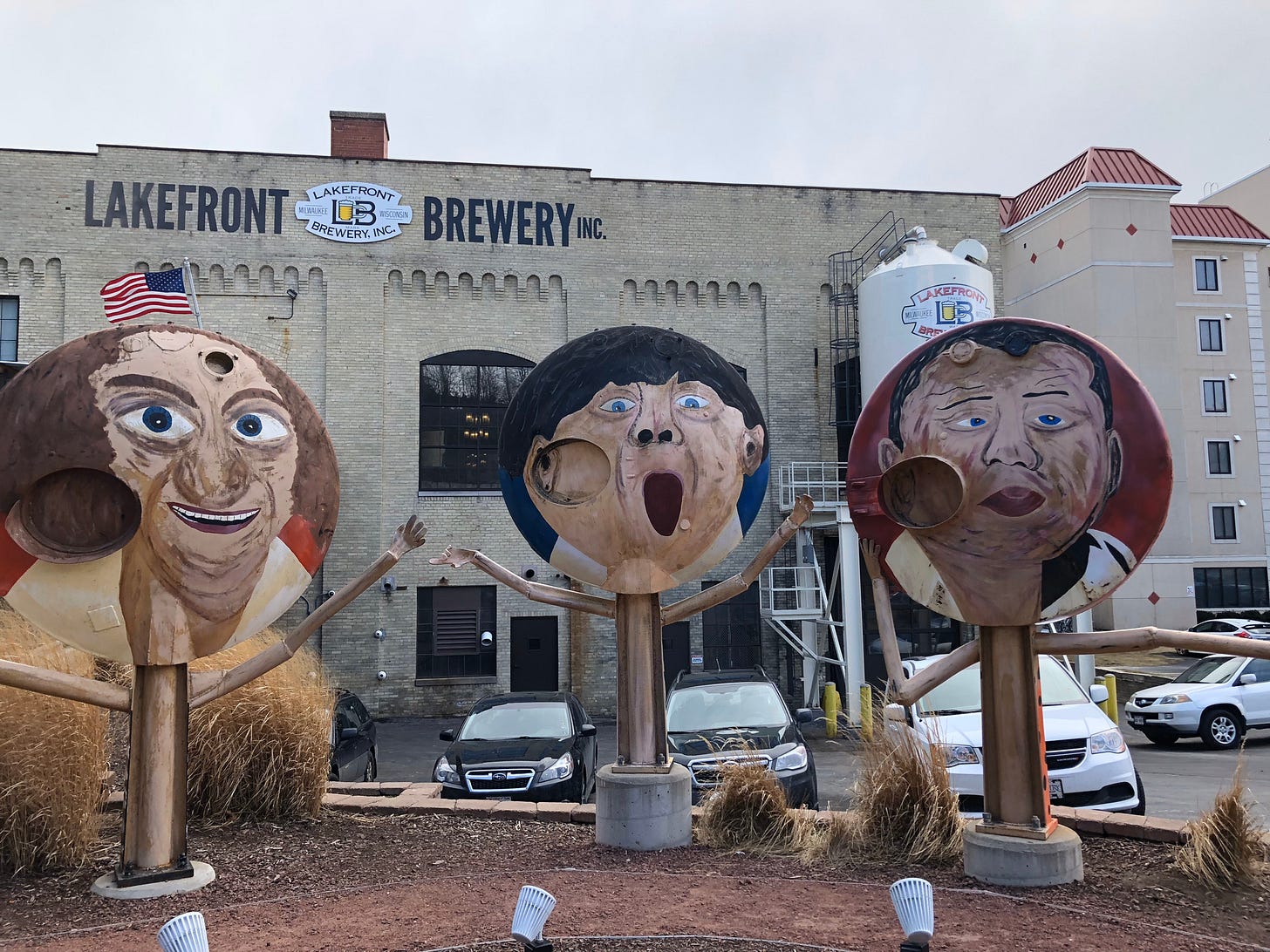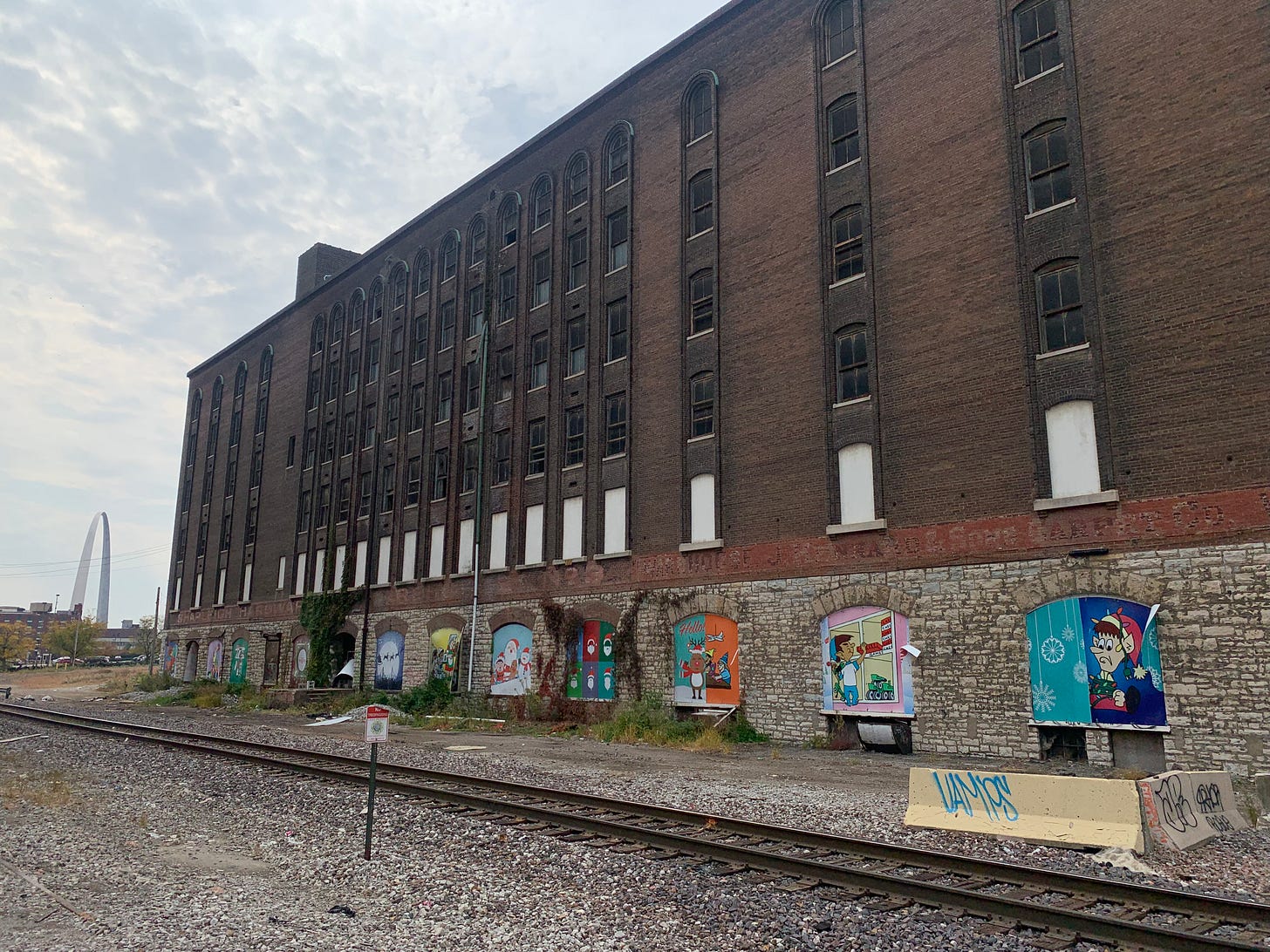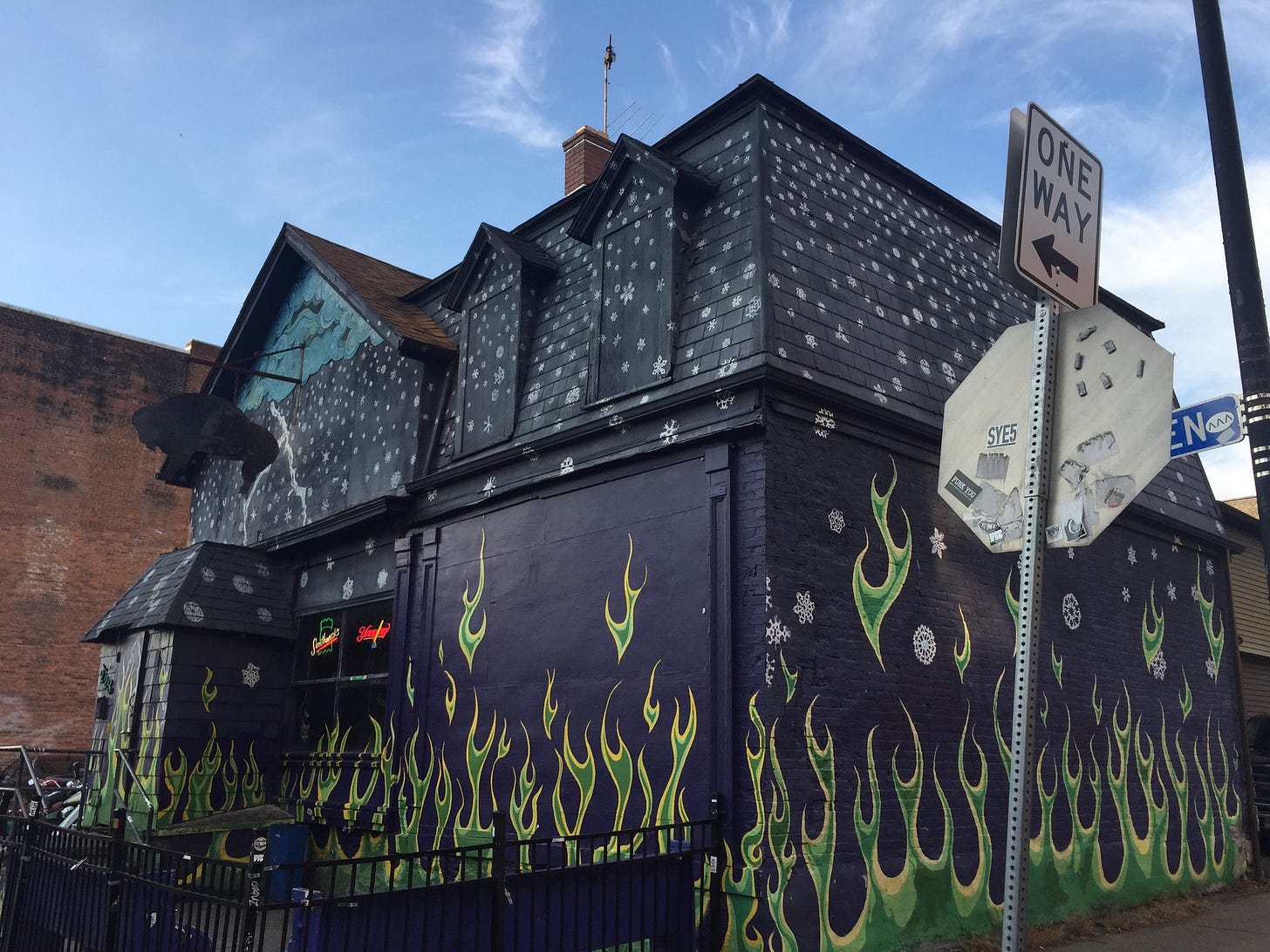Welcome to Second Rate Cities - A Different Kind of Travel Blog
Running and drinking through all the overlooked cities you won't visit.
Off the beaten path is such a cliché in travel. Everyone says that’s what they want, but they don’t. They want to visit the newest, slightly under-the-radar alternative to the over-hyped tourist destination; to find a hidden-gem locale within a booming region; to know about the hole in the wall that only locals visit in a major metropolis. If truly off the beaten path was what people were seeking, they would have seen a buffet of destinations to choose from right here in the United States. Most cities here are completely overlooked as places to visit but they represent the true road less traveled.
These second rate cities are some of the best destinations one can visit. Not only are they typically very cheap, but they’re also not overrun with tourists or gimmicks, and they’re often a time capsule to another era. They remain as they did decades prior, persisting despite the constant and instantaneous change elsewhere. What seems to live on in these cities is exactly what’s watered down in our most popular destinations. These cities have generational continuity in their community, both with the people and physical spaces.
In second rate cities you’ll see money and progress peppered in but it’s a slower drip than the rapid gentrification of those first tier cities. With our major destinations progress has rolled over well-established neighborhood businesses in favor of convenience and exclusivity. Community has been devalued in favor of attracting new money. That’s not to say major destination cities don’t still have great landmarks and institutions to showcase, it’s that the preservation is focused only on those cultural institutions and historically significant, not the less sexy neighborhood stalwarts – the bars, coffee houses, diners, and mom and pop shops. The prevailing culture is new, sleek, shiny, and comfortable in its uniformity. This makes them stale and homogenous, a sort of suburbanization of what should be our cultural centers. The lesser loved cities offer a sense of pride held by the people that have always been there and a retention of the cultural that makes them unique.
I began stumbling upon these cities through my own curiosity while living in New York, where so many were a short-haul flight away. In mentioning these cities there was always a common theme. Everyone had an opinion about a city like Detroit, yet few had ever visited or even entertained the idea. I felt it was important to see these places for myself and gain a better perspective on them. In exploring a few, I quickly learned that they fostered all the things I loved most about neighborhoods I’d lived in before and the cities I enjoyed the most. And yet when I visited, locals always seemed shocked. During a Lyft ride in Milwaukee my driver asked what I was doing there. I said I was just visiting because I’d never been there before.
“So, you’re visiting friends or family?”
“No, just visiting Milwaukee.”
“No work here or anything?”
“No, I’ve just always wanted to see Milwaukee.”
“Huh, I’ve never talked to anyone who was just here for Milwaukee.”
But why? It’s a beautiful city with interesting history and plenty to do. This is what I couldn’t figure out.
These were often short weekend trips and I quickly found that the best bang for my buck in experiencing them was literally running and bar hopping through them. The combination provides a lay of the land, interaction with the people, and access to history and culture. So much ground can be covered, and the most fun will be had with this approach. Plus, the two help to balance each other out.
Running brings to life hours of staring at, and internalizing, maps. I can visualize the map while running and build a sense of direction almost immediately. This is key in getting comfortable in a place I’m only in for a couple of days. I obsess over maps, but they only get me so far, running helps complete the picture.
With running I start connecting dots and fleshing out the city. I get the good, bad, and unexpected. It provides a full, unfiltered view instead of seeing a place only within the walls of my destinations. If I only Lyft from spot to spot, I feel totally disconnected from the city itself. It’s like skipping over all the connective tissue that makes the city what it is and instead drops you from one comfort zone to the next. I suppose many people want just that – highlights only. I prefer walking away with as much of a defined feeling of the place as possible. Give me the blight and scars that come with each block. Running provides that broad overview of the city, not just the layout, but overall accessibility. How are neighborhoods connected or segregated? Does it value the pedestrian, the car, or public transportation? Is it walkable? Is green space easy to come by? How much development is occurring on new ground? How many old buildings are being demo-ed for new ones? You can see a lot of this with a well-planned run.
I do love running in of itself – the access it provides to see so much, the competitive nature of racing, the meditative side, the disconnect from tech, and simply staying fit. But I also love that it provides me an always-renewing free pass to be a degenerate.
I like to ride my runner’s high into a nice buzz. Running puts me on top of the world, and I like to try and get a little higher than that. Too many runners I know reward a hard effort with food from a diet trend or an early night in, or if they’re feeling adventurous, some sweets. What a shame. I want a shower beer and the rest of the six-pack to follow. Or even better, a quality hang at a bar. Where running builds an overview of a new city, the bars (and businesses in general) provide that closer look at the community itself.
And man, do I love a good bar. Ideally that kind of place where I can’t help but crack a smile from the palpable energy felt the moment I set foot inside. The bartenders are boisterous and drinking with the friends they serve. The conversation alone fills the air, but with music matching conversations, everyone’s just a little bit louder. The songs might be something I know and love but likely I don’t know it, making the place just a little bit cooler. It’s coming from the jukebox and a random patron has set the tone, or maybe it’s the bartender in control. The liveliness has made the air a little thick yet there’s still a stray seat at the bar open.
A good bar will have a pool table or darts, or some video poker and foosball, and there’s certainly a singularly cheap beer and equally inviting beer and shot special. With patrons from all walks of life and varying levels of intoxication, there’s still some mystery and potential for chaos. I love that first drink as I settle into what hugs me like the warmth of home, complete with the freedom from any judgement.
That’s what really resonates with me, is the license you’re given at a good bar. You’re in a public setting, yet free to lose yourself or mingle with strangers without a whiff of conceit or retribution from those around you. In an ideal state you’re at the bar because you’re completely unencumbered, no obligations now or tomorrow, the only goal is finding the enjoyment behind the next drink. It is the pinnacle of self-indulgence, the ultimate freedom. But the strange beauty is that a bar is also a perfect place for the antithesis of that, a hideout to escape from the obligations you do have, when life it too overbearing.
The first bars I went to were in New Orleans and they represented that. I had next to no money, and that was enough for a good time at the places we frequented. They were old and in some phase of disrepair. They were also unwilling to change. They became my benchmark for a good bar, and it has yet to change.
Perhaps I’m chasing that high of some of my early and fondest bar experiences. In exploring new cities and their persistent watering holes, I’ve rediscovered that spark and gotten closer to recreating those barroom memories. Of course, replicating them can rarely be achieved. I’ve done it so many times now, the pure excitement of a bar has diminished, and I’m no longer in that state of freedom and bliss where no obligations exist. Now obligations always exist and fucking around for a few hours at a bar can result in a ripple effect that’s felt throughout the week. It’s just inevitable. Bars giveth, and they taketh away.
The morning after a night out I often feel some mix of self-loathing, anxiety, regret, and ambiguity hanging over me. This, despite not doing something embarrassing (which was a staple of my younger days). Running, in spite of those feelings, pushes my mind past them all and allows me to move through the day without the burden of unjust emotions. And although counterintuitive for many, it also eases much of the physical pain. But there is no cure for a hangover. The closest you’ll get comes in the form of hydration and exercise. And it’s remarkably effective, especially with food and a drink on the other side of it.
And that in turn keeps this cycle in perpetual motion. While I don’t recommend it for a permanent lifestyle, it provides the semblance of structure with a hint of well-being during what might otherwise be considered a bender. And in turn keeps me balanced and exploring as much as I can of our Second Rate Cities.
Join me!







I’ve enjoyed reading your pieces. And I don’t drink, don’t run, but do appreciate old, decaying buildings & visiting new places. You may wanna think about visiting Davenport IA, part of the Quad Cities area. My husband and I were pleasantly surprised.
I love this concept so much.
"Everyone says that’s what they want, but they don’t." I think about this all the time. I live in one of the most visited cities in the world (Rome) (and am about to move to another (Venice.) Of course people want to see the Colosseum and ride in a gondola, but even in these popular cities there are lifetimes of things to see and do.